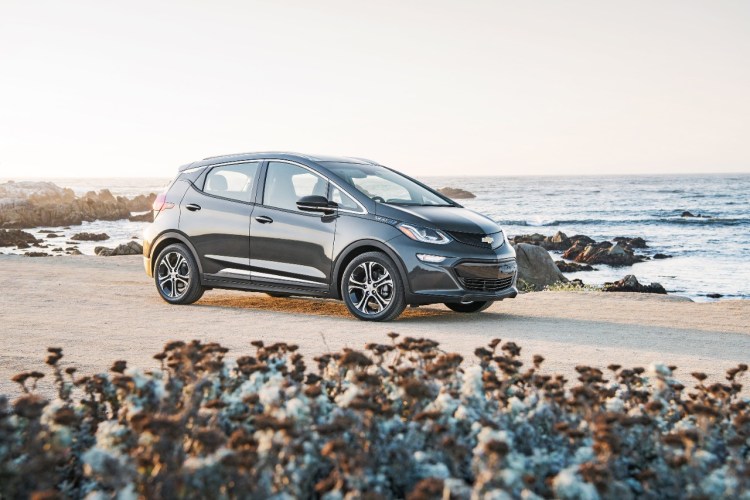“Electrification” has long been a buzzword in the automotive sector. Now, GM has decided to raise the stakes with the announcement that it’s planning “an all-electric future.” In the next 18 months, the company will introduce two new electric vehicles. By 2023, it will introduce another 20.
“GM is taking this strategy because our customers are moving in this direction,” said Pam Fletcher, executive chief engineer of global electric and autonomous vehicles, speaking to VentureBeat. “When we introduced the first-generation Chevrolet Volt in 2011, we weren’t sure how the market would respond. Turns out, Volt owners were among the most satisfied in the industry, same for the Bolt EV. The Bolt EV and Volt are bringing new customers to GM that would not have considered any of our brands. Having electrified solutions like the Volt and Bolt EV were what drive them to the brand.”
Of course, “electrified” and “all-electric” are not necessarily the same thing. And for a company famous for making the Corvette, the road to either might be a little bumpy, since there’s the almost insurmountable problem of driver perception. Americans like their trucks, their sporty cars…and their gas engines.
Lauren Fix, a well-known automotive expert, says GM is making this dramatic shift because it has no choice.
June 5th: The AI Audit in NYC
Join us next week in NYC to engage with top executive leaders, delving into strategies for auditing AI models to ensure fairness, optimal performance, and ethical compliance across diverse organizations. Secure your attendance for this exclusive invite-only event.
“GM must make this offering, whether they make a profit or not, because government regulations are putting pressures on auto manufacturers to meet higher environmental standards, and they must comply,” Fix explained, in an email to VentureBeat. “They are offering a full line of hybrid/plug-in options. The combustion engine is not dead, but GM is forced to meet the CAFE (corporate average fuel economy) standards by 2034 of 54.5 miles per gallon [on average across all vehicles].”
Meanwhile, Michelle Krebs, director of automotive relations for the AutoTrader Group, says this move is all about China.
“China is the world’s biggest car market. China buys somewhere in the neighborhood of 24 to 28 million vehicles a year there,” Krebs noted, in an email to VentureBeat. “The U.S. is second, with last year’s record sales of 17. 5 million vehicles. China has said that it would like to be all electric — no gasoline or diesel engines — by 2040. It is not a law yet, but it is where China is going directionally. If GM wants to continue being a global player in the future in this large, growing market, it must go electric.”
Of course, GM is not the only manufacturer feeling pressure to take its foot off the fossil fuels. But how different car companies define “electric” can be a little confusing.
Tesla makes an all-electric sedan, and the Chevy Bolt EV runs only on battery power. But the experts argue that GM means “electrification” in terms of plug-ins, like the newly released 2017 Cadillac CT6 Plug-in and other “electrified” gas engine cars. Hybrids are, as the name implies, a compromise in the form of a gas engine with some electrical assist to boost fuel economy — though at low speeds many plug-in hybrids run in all-electric mode.
Krebs said GM’s ultimate goal is completely electric vehicles, but as we witnessed when Volvo announced an all-electric future, the wording can be tricky. “The Volvo story was highly misleading and poorly reported,” Krebs explained. “Volvo said ‘electrified’ in the short term — that can mean hybrid, plug-in hybrid, pure electric. GM is saying ‘all-electric’ — that means battery electric or fuel-cell electric. GM will continue to have hybrids and plug-in hybrids — those are ‘electrified’, not ‘electric’. GM sees hybrids and plug-in hybrids as a bridge to electric.”
“The preference is not for vehicles like the Camaro,” Krebs added. “Muscle cars get a lot of attention, but look at the sales. They are in a downward spiral. Camaro buyers are largely aging baby boomers who are dying out, and the Camaro is very much a U.S. thing.”
Fix is not sure if this move will resonate with drivers, though.
“The huge missing piece is customers are not buying plug-in cars due to range anxiety and charger anxiety,” she said, noting that the total sales for all-electrics is around 2 percent.
Regardless, GM sees this as a planet-saving endeavor.
“We look at this in a holistic way — better aligning our energy strategy and our product portfolio to enable cleaner cars to drive on a cleaner grid,” said Fletcher. “That’s why we’ve committed to generate or source all electrical power for our global operations with 100 percent renewable energy by 2050. By the end of 2018, we’ll be 20 percent there.”
However you view the change to electrification, one thing is clear — we will keep hearing more about these advances, even if we don’t actually go out and buy an electric car anytime soon.


